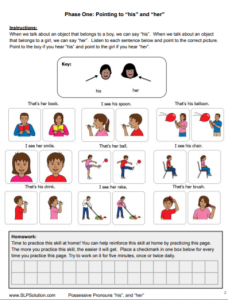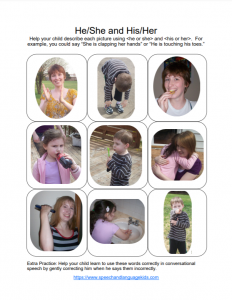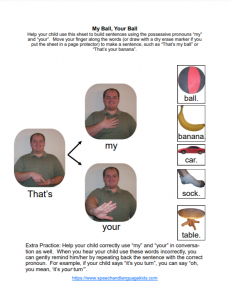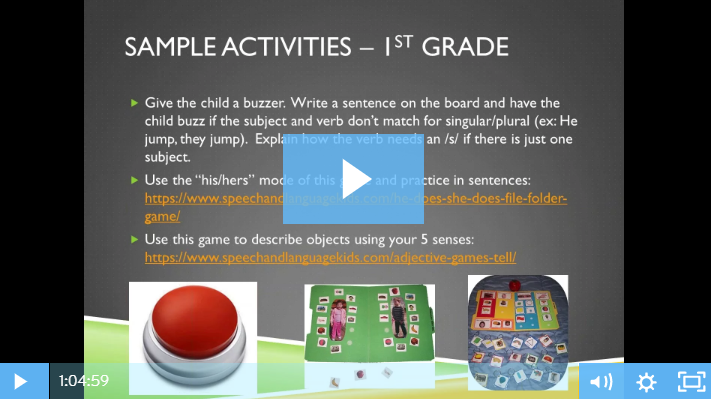Goal: Use Possessive Pronouns in Conversational Speech
Sample Goal:
Download the No-Prep Therapy Kit:
We have a start-to-finish therapy kit that will give you everything you need to practice this skill in therapy and send home homework. Click the packet below to open it. Then, print it out and place it in the child’s notebook or binder.
When teaching possessive pronouns, you may want to target only one or two at a time. Choose the kit that your client needs to target:
Therapy Phases:
Choose one or two pronouns to target at one time (examples: “my”, “your”, “his/her”, “our”, “their”, etc.). Work through the following phases with each of the pronouns that you choose to target.
- Receptive Identification of Possessive Pronouns: Client will demonstrate understanding of the possessive pronouns <INSERT TARGET PRONOUNS HERE> by pointing to a picture/object as described by the clinician using a specific possessive pronoun with at least 80% accuracy (such as “point to his ball” when there is a picture of a boy with a ball and of a girl with a ball).
- Using Possessive Pronouns in Short Phrases: Client will correctly use the possessive pronouns <INSERT TARGET PRONOUNS HERE> in a short phrase in response to a question by the clinician with at least 80% accuracy (such as, “whose ball is it?” “my ball”).
- Using Possessive Pronouns in Sentences: Client will use the possessive pronouns <INSERT TARGET PRONOUNS HERE> in sentences when describing a picture or scene with at least 80% accuracy.
- Using Possessive Pronouns in Structured Conversation: Client will correctly use the possessive pronouns <INSERT TARGET PRONOUNS HERE> in structured conversation tasks, such as when answering open-ended questions or making up short stories, in at least 80% of obligatory contexts (places where it should be used).
- Using Possessive Pronouns in Unstructured Conversation: During a 10-minute observation in the natural setting, Client will correctly use the possessive pronouns <INSERT TARGET PRONOUNS HERE> in at least 80% of obligatory contexts (places where it should be used) during conversational speech.
What’s Next?
- Once the client has mastered one type of possessive pronoun, you can address other types of possessive pronouns that are missing or work on another grammatical marker.
Supplemental Materials
Here are some other resources that may help you when working on this skill:
An additional worksheet for practicing “his” and “her” in short phrases.
He/She AND His/Her in Sentences Worksheets
Worksheet that helps a client build sentences with he/she AND his/her (like “she is clapping her hands”).
My/Your in Sentences Worksheets
Simple worksheet for practicing “my” and “your” in sentences.
Webinar Recordings:
If you need some in-depth information related to this skill, check out our related webinar recording(s):








